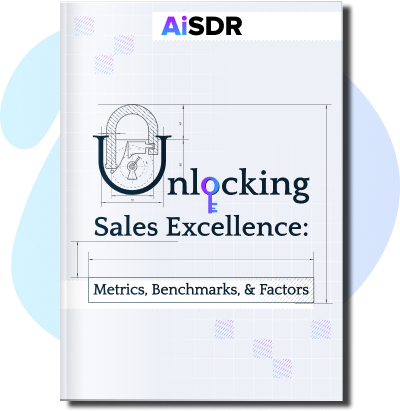What are the Features of a Good Lead Database?

Explore 7 features you need to look for in lead databases
B2B lead databases are the bedrock upon which you build your sales and marketing strategies.
A bad B2B database will lead your strategy to fail and your sales will be set back months, if not over a year. That’s if you’re lucky. It takes at least 3 months to understand if a sales approach starts to gain traction.
A good B2B database will set you up for sales success by supplying you with the names, jobs, and other critical data to drive sales.
So that you know what to look for, here are 7 features you need in a good B2B lead database.
Data quality
First and foremost, good lead databases need high-quality data that’s accurate, current, and ready to use on day 1.
Accurate data ensures you connect with leads when you want. Fresh data means your team won’t waste time on outdated contacts or irrelevant leads, saving you resources.
When your sales emails use bad data, leads frequently ignore or react negatively to your outreach. On the flip side, emails with accurate data imply to leads that you’ve taken the time to learn about them.
Lead segmentation
Lead databases need to provide the ability to categorize leads by qualities like industry, location, job title, and department. It’s even better if the database can go deeper and provide more categories to search for leads.
This allows you to create campaigns with messaging that targets specific lead segments. Since you’ll be able to abandon generic templates, your outreach should generate better results. That’s because leads are more likely to respond to emails that address their situation.
Lead segmentation is also the minimum requirement for running A/B tests on different outreach strategies and tactics.
Relevant data
Lead segmentation is an important first step in getting useful data, but you also need to check that a database gives you the right data.
Relevant data is important because it helps sales teams focus on the right leads. And data that’s deep and relevant allows sales teams to better understand prospect needs and create messages that speak directly to each lead. As a bonus, deep data saves teams from sifting through extra data and doing their own research.
If you’re not sure how to decide which data is relevant, you should look for the types of data you include in your ideal customer profile and buyer persona.
This might be:
- Specific intent signals
- Specific funding rounds
- Recent news
- Industry trends
- Demographics
- Firmographics
Deeper, more relevant data will improve your outreach’s effectiveness and increase your chances of closing a deal.
Automatic updates and enrichment
Data is only useful if it’s fresh, accurate, and complete. Accordingly, lead databases should regularly and automatically update the information in their database. If a lead changes jobs or companies, the database reflects it as soon as possible.
Databases should also enrich leads when possible so that the gaps in lead data are kept to a minimum.
Easy integration
If you want to make your job easier and streamline your team’s process, you should look for B2B databases that easily integrate with your specific CRM, email marketing, and other sales tools. There should also be a two-way data sync so that you don’t need to worry about manual data entry.
Alternatively, you can try a platform like AiSDR which comes with lead databases (ZoomInfo, RocketReach) already built in. This lets you eliminate the need for a standalone database subscription and merge two functions into one.
Pricing & scalability
As your company grows and gains traction, you’ll need to expand your sales efforts. As such, you’ll need to consider these factors:
- Volume of leads – What costs can you expect if you use more lead data?
- Pricing structure – How will costs change as you scale, use more filters, or try other features?
- Available plans – What are the different tiers and conditions for each plan?
- Contract length – Is there a minimum time commitment?
- Hidden costs – Are there extra fees for set-up, export, or overage?
Most lead databases offer a set of plans to choose from with different volumes. AiSDR provides unlimited leads to contact as part of its basic monthly plan ($750 per month for 1,000 emails).
A cost-effective database lets you add more leads without overspending, which is crucial for scaling. At the same time, an expensive database will limit how many leads you can reach out to, but it might supply deeper intel than cost-effective databases.
That’s why it’s entirely possible you might find yourself with two database subscriptions for different purposes.
Compliance with data laws
Data privacy regulations like the General Data Protection Regulation (GDPR) and the California Consumer Privacy Act (CCPA) improve strict requirements on how data is collected, processed, and stored.
To stay compliant, you’ll want to verify how your database follows these regulations.











